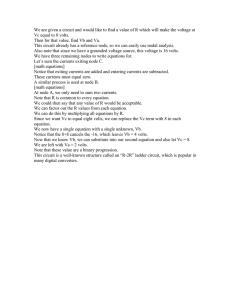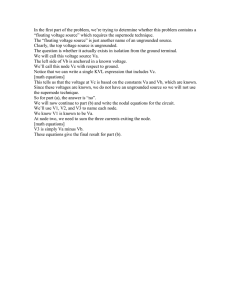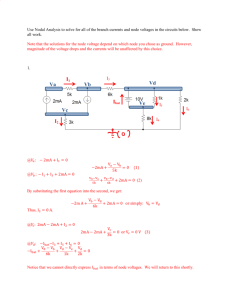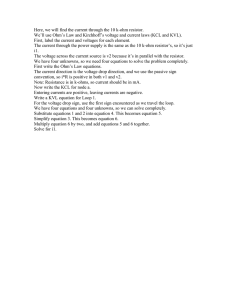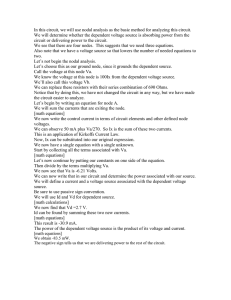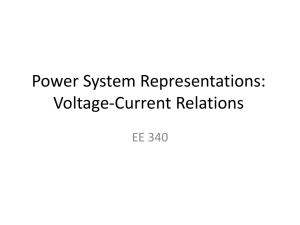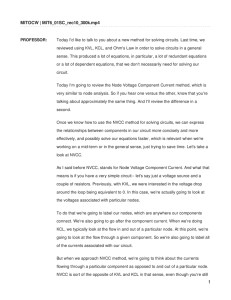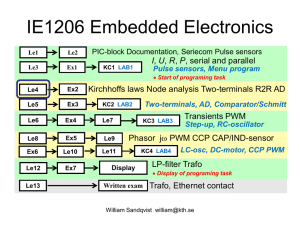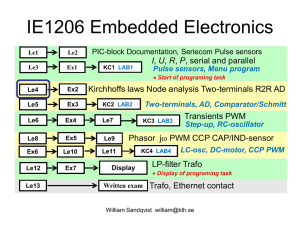Let’s find the three node currents by using the node... We have three identified currents in the circuit.
advertisement
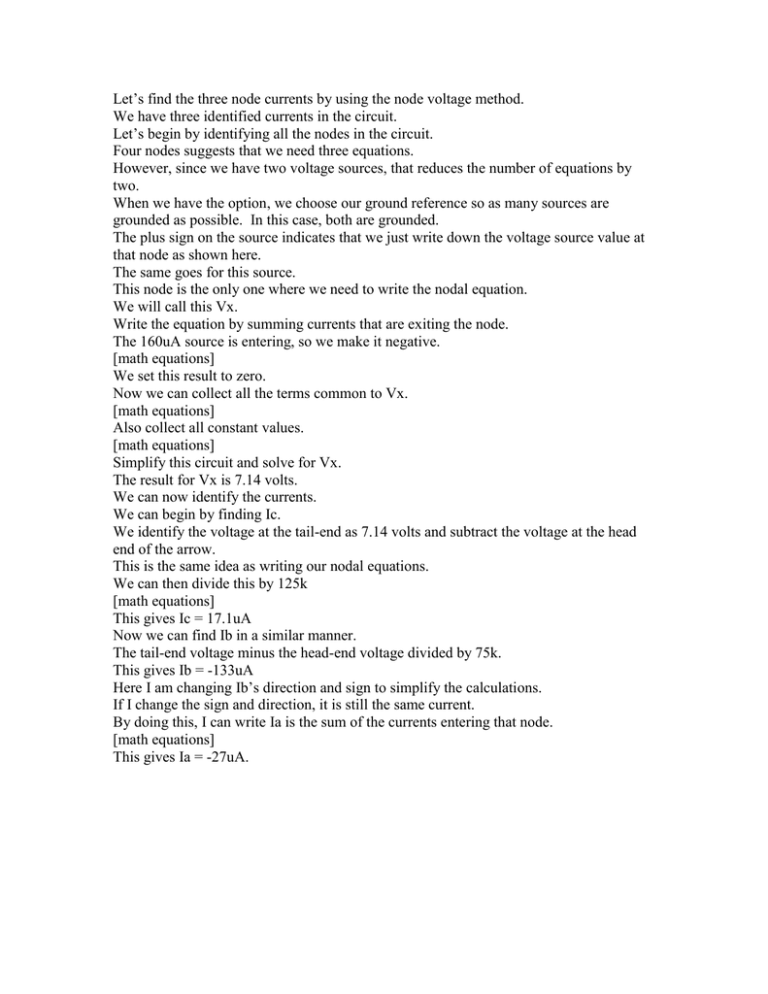
Let’s find the three node currents by using the node voltage method. We have three identified currents in the circuit. Let’s begin by identifying all the nodes in the circuit. Four nodes suggests that we need three equations. However, since we have two voltage sources, that reduces the number of equations by two. When we have the option, we choose our ground reference so as many sources are grounded as possible. In this case, both are grounded. The plus sign on the source indicates that we just write down the voltage source value at that node as shown here. The same goes for this source. This node is the only one where we need to write the nodal equation. We will call this Vx. Write the equation by summing currents that are exiting the node. The 160uA source is entering, so we make it negative. [math equations] We set this result to zero. Now we can collect all the terms common to Vx. [math equations] Also collect all constant values. [math equations] Simplify this circuit and solve for Vx. The result for Vx is 7.14 volts. We can now identify the currents. We can begin by finding Ic. We identify the voltage at the tail-end as 7.14 volts and subtract the voltage at the head end of the arrow. This is the same idea as writing our nodal equations. We can then divide this by 125k [math equations] This gives Ic = 17.1uA Now we can find Ib in a similar manner. The tail-end voltage minus the head-end voltage divided by 75k. This gives Ib = -133uA Here I am changing Ib’s direction and sign to simplify the calculations. If I change the sign and direction, it is still the same current. By doing this, I can write Ia is the sum of the currents entering that node. [math equations] This gives Ia = -27uA.


